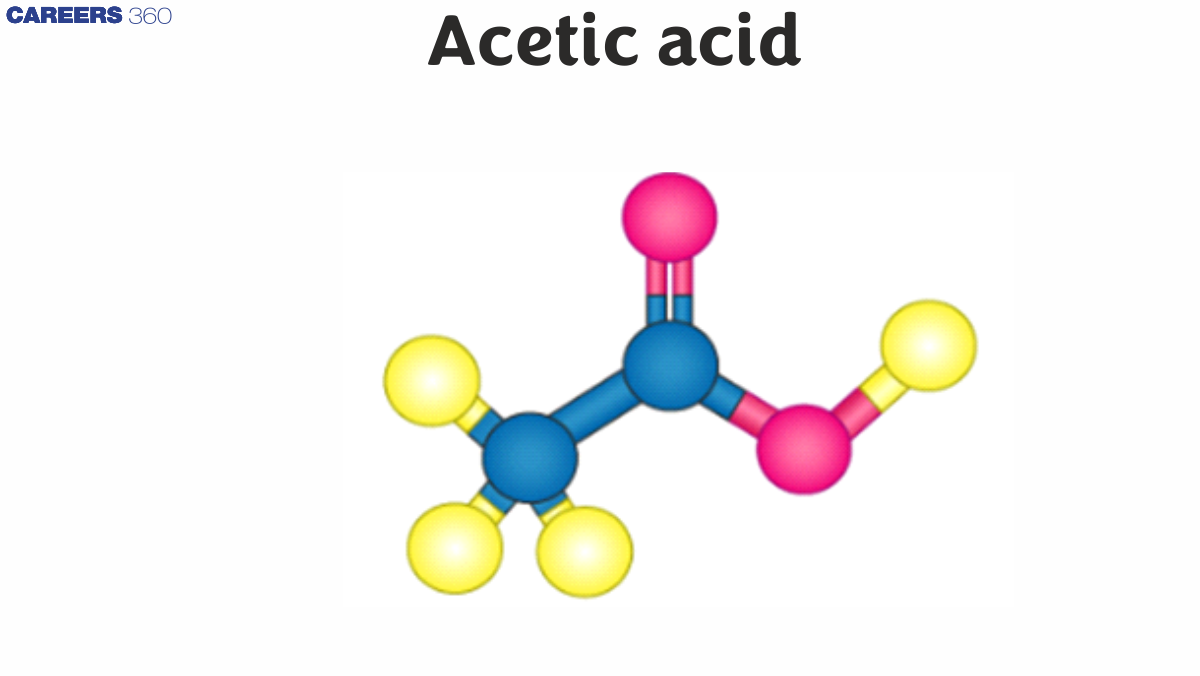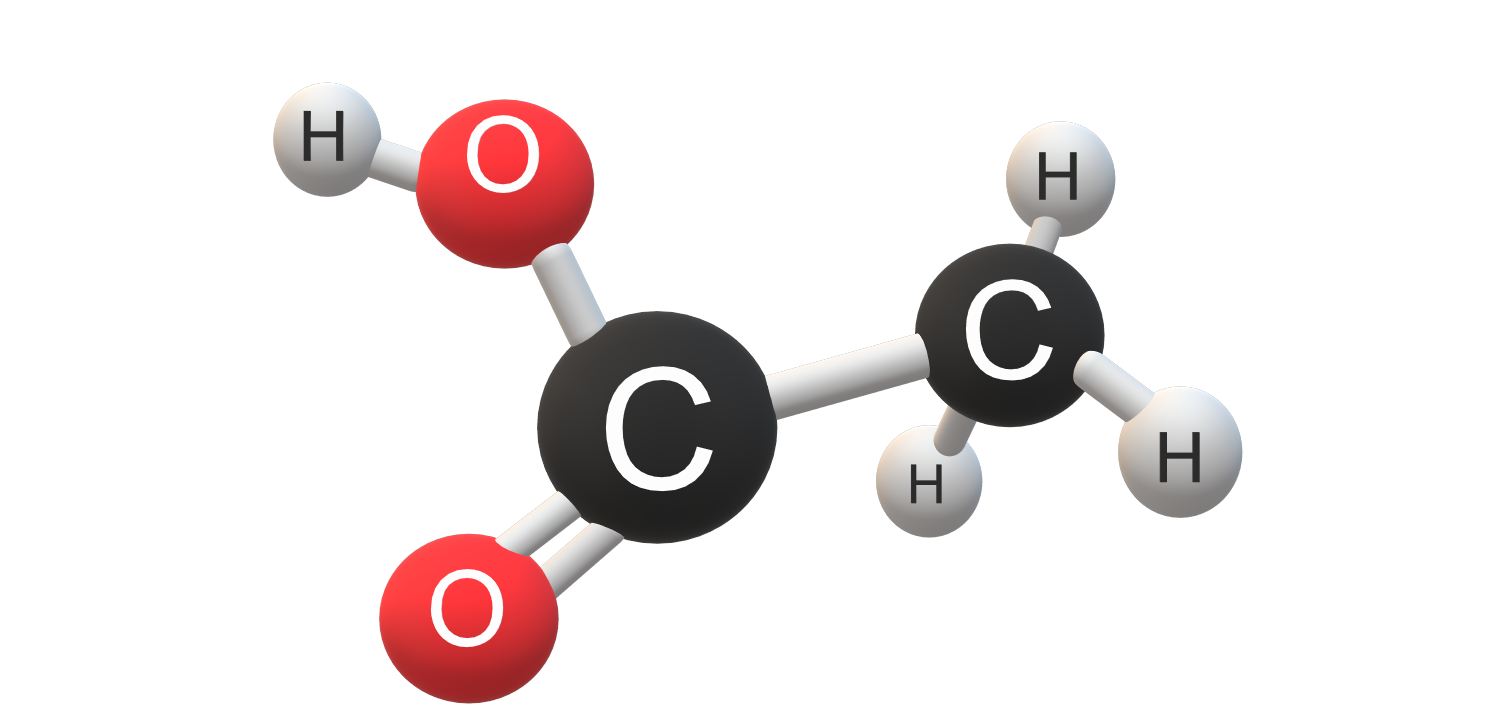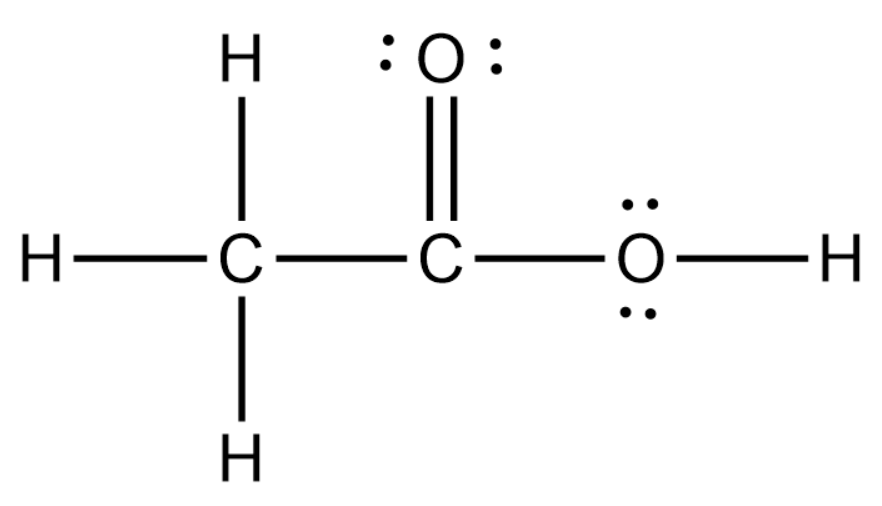Acetic Acid - Overview, Structure, Properties & Uses, FAQs
Acetic acid is a carboxylic acid group organic compound having molecular formula CH3COOH. In this compound, a group of methyl is attached to a functional carboxyl group. The main element of vinegar is acetic acid. Mixer of Acetic acid and water forms the vinegarsolution, of which 5% to 20% in the volume is acetic acid. The acetic acid has a pungent odor and a sour taste. In this article we will be exploring various dimesions pertaining to acetic acid which are its structure, physical and chemical properties among others.
NEET 2025: Mock Test Series | Syllabus | High Scoring Topics | PYQs
JEE Main: Study Materials | High Scoring Topics | Preparation Guide
JEE Main: Syllabus | Sample Papers | Mock Tests | PYQs
- Structure of Acetic acid:
- Ethanoic acid structure:
- Preparation of acetic acid:
- Physical properties of acetic acid
- Chemical properties of acetic acid:
- Uses of Acetic acid:

Acetic acid is found in or produced and excreted by acetic acid bacteria, especially Acetobacter and Clostridium acetobutylicum. These bacteria are ubiquitous in food, water, and soil. Acetic acid is naturally produced when fruits and other foods deteriorate. The IUPAC name of acetic acid is Ethanoic acid.
Structure of Acetic acid:
Let’s see the Acetic acid structure. Ethanoic acid is the simplest carboxylic acid.
The acetic acid structure is defined as CH3COOH.
In the solid-state, acetic acid is a molecular chain in which individual molecules are connected by hydrogen bonds.
The temperature of its dimer in the vapor state is approximately 120 °C.
In the liquid phase, its dimer exists in a dilute solution.
Ethanoic acid structure:

Lewis structure of CH3COOH (Acetic acid)

Resonance structure of CH3COOH (Acetic acid)
CH3COOH CH3COO-+H+

(self-made using ChemDraw)
Preparation of acetic acid:
The methanol carbonation produces acetic acid industrially. The chemical equations are provided below for the three steps involved in this process.
CH3OH + HI → CH3I+ H2O
CH3I + CO → CH3COI
CH3COI + H2O → CH3COOH + HI
Here, the reaction between methanol and hydrogen iodide produces an intermediary methyl iodide. This intermediary is reacted with carbon monoxide and treated with water to provide the product with acetic acid. It is important to note that for step 2 of this process a carbonyl metal complex should be used as a catalyst.
Physical properties of acetic acid
Acetic acid has a pungent vinegar taste and bitter taste.
Colorless liquid.
It boils at 391 K.
It has a liquid density of 1049 g/cm³.
It can be mixed with water, alcohol and ether in any ratio.
It is soluble in water, emits heat and reduces its volume.
It is corrosive and can cause blisters in contact with the skin.
Chemical properties of acetic acid:
The carboxyl functional group in acetic acid causes the compound to ionize according to the following reaction: CH₃COOH ⇌ CH₃COO⁻ + H⁺
The acidity of acetic acid is based on an equilibrium reaction that releases the aforementioned protons.
In an aqueous solution, the acid dissociation constant that is pKa of acetic acid is 4.76.
CH3COO−, acetate is the acetic acid conjugate base.
Acetic acid will not dissociate completely, because it can be seen that the pH of an acetic acid solution with a concentration of 1.0 M is 2.4.
Acetic acid is a polar protic solvent with a dielectric constant of 6.2 in liquid form.
Uses of Acetic acid:
Ethanic acid in humans' everyday lives is a very important organic compound. The following is a list of important uses of acetic acid.
Because of its antibacterial qualities, acetate acid is used as an antiseptic.
Ethanoic acid is involved in the production of radiation fibre.
Acetic acid, by direct injection into the tumour, has been used to treat cancer.
As the main component of vinegar, many vegetables are used for pickling.
Ethanoic acid is used for the manufacture of rubber. It is also used in the production of different perfumes.
It is used in large numbers in VAM production (vinyl acetate monomer).
Also check-
Frequently Asked Questions (FAQs)
Acetic acid, also known as ethanoic acid has chemical formula CH3COOH.
Acetic acid uses are across different fields:
1. Food Industry: Vinegar Production and Food Preservation
2. Chemical Industry: Chemical Reagent
3. Medical Uses: Antiseptic and antibiotics.
4. Household uses: Cleaning Agent
The common name of CH₃COOH is acetic acid.
Acetic acid is generally safe when used in diluted forms, such as in vinegar (about 4-8% concentration). It is commonly used in food, cleaning, and other household applications without causing harm. However, safety depends on its concentration as at higher concentration, it can be an eye, skin, and mucous membrane irritant.
Also Read
16 Dec'24 11:34 PM
16 Dec'24 11:32 PM
09 Dec'24 11:34 AM
09 Dec'24 11:33 AM
09 Dec'24 11:14 AM
12 Nov'24 12:07 PM
19 Oct'24 02:52 PM
30 Sep'24 11:42 AM
